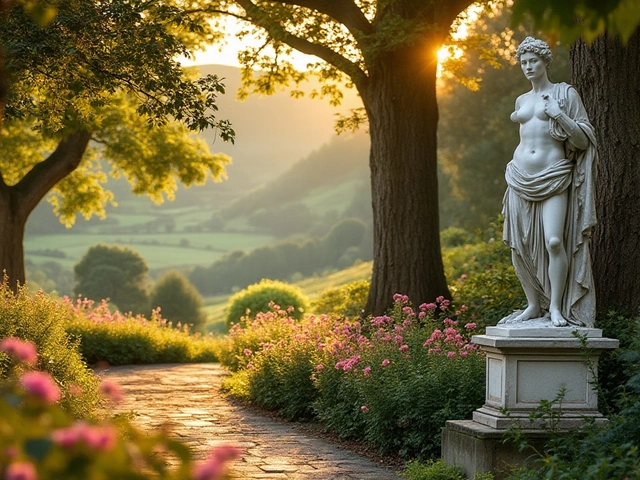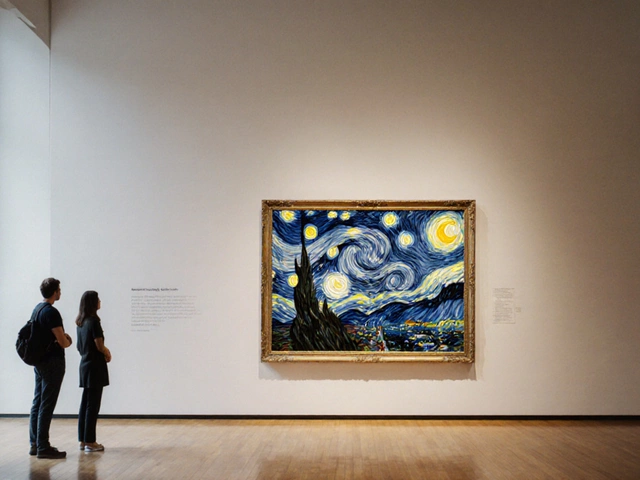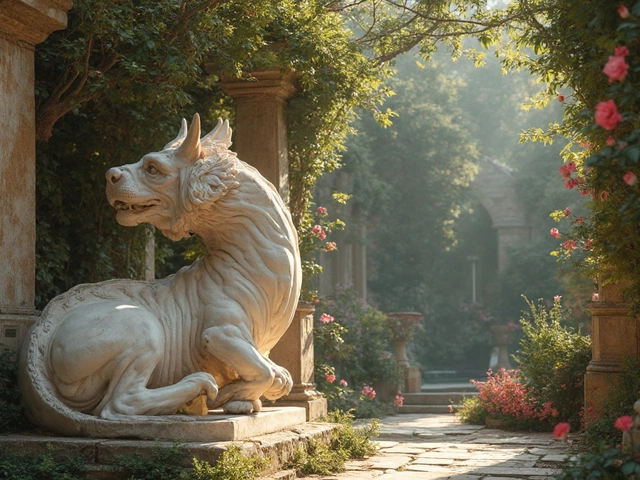Vincent van Gogh’s 'Starry Night' isn’t just a painting; it’s an emotional tidal wave captured on canvas. But what if you’re trying to pull that same feeling into your watercolor artwork? It’s possible, and honestly, it’s not as hard as it sounds.
First off, let's talk about symbolism. Van Gogh wasn’t just painting for the fun of it. He used the night sky to spill out emotions, ideas, and a bit of himself. Those swirling stars? They could mean a connection to the universe or simply the chaos in his mind. This element makes it a goldmine for artists wanting to infuse deeper meaning into their work.
Now, if you’re diving into watercolors, grabbing ahold of that starry essence could really level up your game. Watercolors, with their fluid nature, allow for a dreamy expression, much like Van Gogh’s turbulent sky. Understanding how to manipulate this can open up new creative possibilities for anyone willing to explore the depths of a starry night.
- The Mystique Behind Van Gogh’s Starry Night
- Emotional Depth in Starry Watercolor Works
- Techniques to Capture Night Skies in Watercolor
- Symbolism of Stars and Their Influence on Art
- Tips for Bringing 'Starry Night' Vibes to Your Work
The Mystique Behind Van Gogh’s Starry Night
'Starry Night', painted in 1889, is one of Vincent van Gogh's most famous works. It's like the ultimate poster child for the expression of turmoil interwoven with beauty. But what’s the magic sauce behind this painting that continues to captivate art lovers?
This masterpiece isn’t just some random nighttime scene; Van Gogh painted it while staying at a mental asylum. He wasn’t in a great place mentally, and that stress, mixed with a yearning for hope, is supposedly spilled across the canvas. The vibrant, swirling stars contrast perfectly with the static, sleepy village below, almost creating a dance between contrast and chaos. Imagine trying to put all that raw emotion into any kind of art, let alone watercolor paintings!
What’s intriguing is the duality of peace and chaos. The rolling hills and the big cypress in the foreground supposedly symbolize eternal life, a recurring theme in Van Gogh's works, considering his struggles with faith and the unknown.
Now, let’s talk color. Van Gogh's choice of deep blues and bright yellows does more than look good—they engage viewers on an emotional level. Those who paint know how color can tug at feelings, turning a simple scene into something profound.
If you're an artist, drawing inspiration from 'Starry Night' isn’t just about technique. It's about putting yourself into the work, like Van Gogh did. It’s picking up a brush and asking, “What do the stars say about my story?” When you see a piece of art like this, maybe it's a call to reflect on the stories you want to share with the world.
Emotional Depth in Starry Watercolor Works
When diving into Starry Night inspirations, you're not just slapping paint on paper. You're embodying raw emotion and connecting with the viewer on a deeper level. Van Gogh’s 'Starry Night' is a dance of colors and emotions—a display of turmoil and hope simultaneously. Get this: watercolors are perfect for expressing such complexity because of their natural fluidity and unpredictability.
“I know nothing with any certainty, but the sight of the stars makes me dream.” – Vincent van Gogh
This quote tells us how much the night sky, specifically those twinkling stars, stirred something profound within Van Gogh. They signified dreams and the vastness beyond our daily struggles.
When you paint a 'starry' piece, your aim should be to capture not just the visual beauty but the feeling it translates into. Use different shades of blue to convey mystery, dashes of yellow for warmth, and perhaps a touch of red to add an unexpected pop—showing life’s unpredictability.
To bring out that emotional magic in your watercolor paintings, give this a shot:
- Start with a wet-on-wet technique to get those cloudy, blurred edges, which suggest something beyond reach.
- Layer different washes to gradually build up intensity, representing ups and downs of emotions.
- Use splattering to mimic stars—this randomness brings a touch of realism and whimsy.
The trick is to let the watercolors flow and surprise you, just as life and emotions do. With each brushstroke, you're creating a story that's as vast and moving as the sky van Gogh painted.
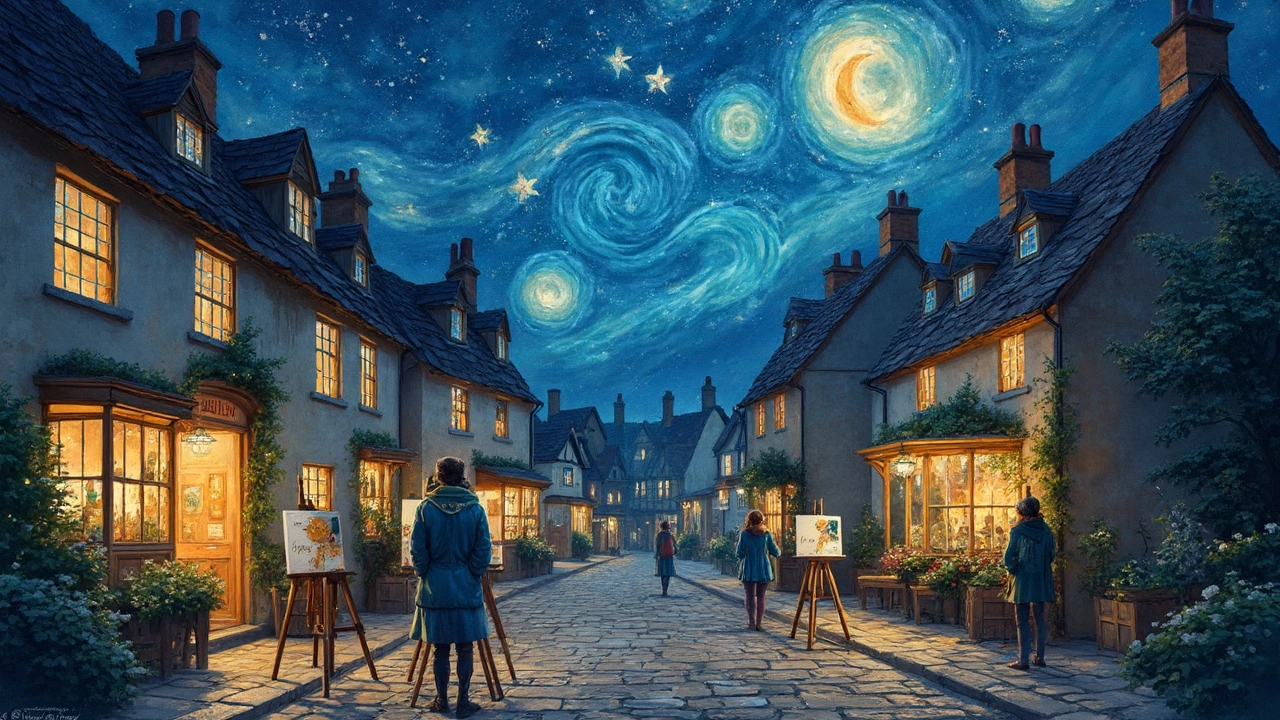
Techniques to Capture Night Skies in Watercolor
Capturing the essence of a starry night using watercolors can be a mesmerizing experience. To get that dreamy, swirling effect reminiscent of Van Gogh's masterpiece, knowing a few tricks can really help.
First things first, you'll need to choose the right materials. Opt for high-quality watercolor paints and paper; your results depend a lot on these. For the deep blues and blacks of the night sky, you'll want to have ultramarine blue, indigo, and even some Payne's gray in your palette for that added depth.
Next, let's talk technique. For those swirling textures and starry effects, using the wet-on-wet method is key. Here’s a basic rundown:
- Begin by soaking your watercolor paper with a broad brush until it's damp but not soaking.
- While the paper is still wet, start applying your chosen night sky colors. This allows the colors to blend naturally and create soft, smooth gradients.
- As the background dries a little, sprinkle some table salt onto certain areas. This technique gives a subtle, star-like texture that captures the essence of a vibrant sky.
Creating stars involves a bit of splatter technique. Once your sky layer is dry, use a white gouache or opaque white watercolor. Load a brush with the color and flick the bristles with your finger or use a toothbrush for fine misting. These random splatters against a dark background can produce a stunning resemblance to twinkling stars.
Layering can also add depth. Consider adding layers of varying blues and purples, letting each dry before adding the next. This can give the effect of distant cosmic clouds or the subtle glow of a light-polluted sky.
Practice makes perfect, especially with watercolors. The unpredictable flow of paint can bestow your piece with unexpected but delightful results, a nod to the mystic nature of starry nights.
Symbolism of Stars and Their Influence on Art
Ever look up at the night sky and wonder what those twinkling stars stand for? You're not alone. Stars are loaded with meaning—brightness in the dark, hope in isolation, and sometimes even a guide in uncertainty. This symbolism has been a magnet for artists throughout the ages, and starry night themes keep popping up in art, especially in watercolor paintings.
Let’s face it, stars are pretty universal symbols. They’ve been viewed as signs from the divine in almost every culture. Artists, including our buddy Vincent van Gogh, have used stars to express the spiritual, the emotional highs and lows, and even the chaos inside. There's a reason Starry Night is so iconic—it's not just about painting stars, it's about what they represent.
Watercolor, with its flowing transitions and ability to blend effortlessly, makes it a perfect ally for capturing what stars can symbolize. It lets artists convey the vastness and mystery of a starry sky with a few strategic strokes and splashes, something more rigid mediums might struggle with.
Now, if you're an artist thinking about ways to incorporate star symbolism into your work, watercolors give you the flexibility to play with light, darkness, and everything in between. Here are a few ways to do that:
- Emphasize layers: Create depth by layering different shades. Those layers can represent the multiple meanings or emotions tied to starlight.
- Play with contrast: The stark difference between light stars and the dark night can be a powerful metaphor in your art.
- Use fluidity: Let the water do some of the work, creating an organic feel in your sky that echoes the unpredictable nature of real life.
And for a quick fun fact, did you know that in ancient times, stars were often linked to fate and destiny? They were like cosmic GPS, believed to guide the lives and decisions of mortals. Cool, right? Knowing this, you can add even more layers to your work’s meaning.
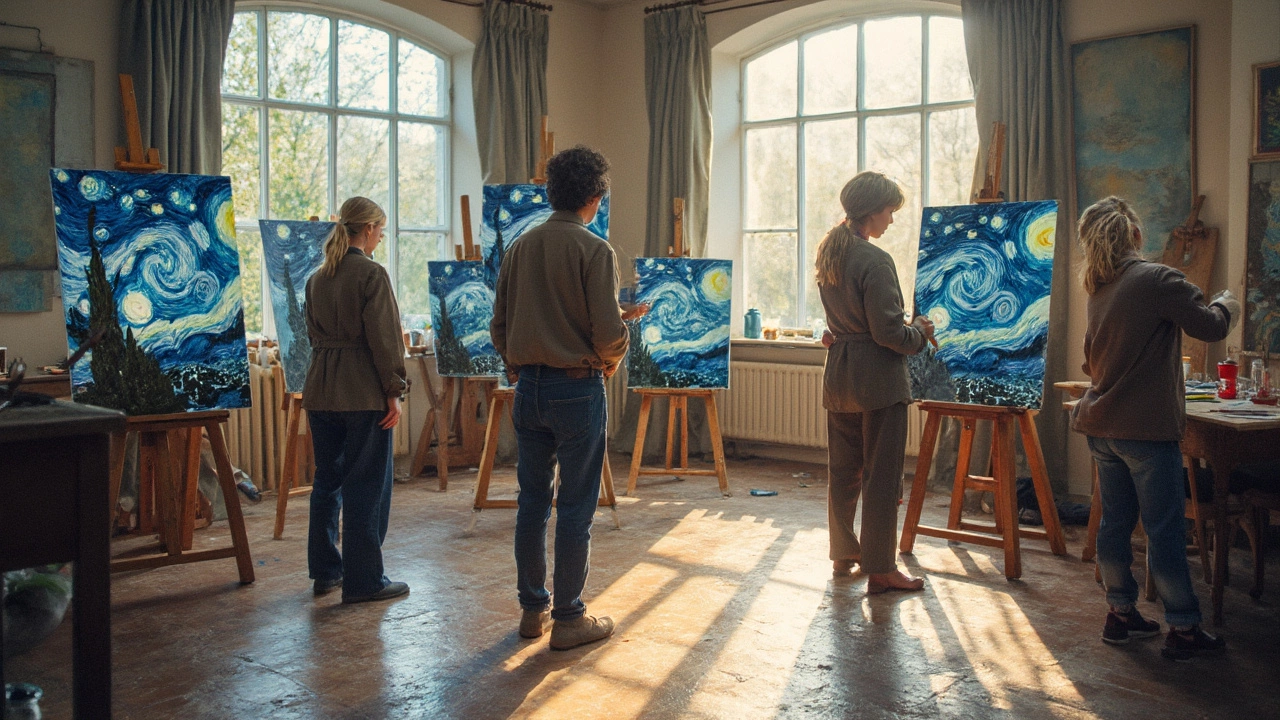
Tips for Bringing 'Starry Night' Vibes to Your Work
Channeling van Gogh's iconic Starry Night into your watercolor paintings isn't just about copying swirls and stars. It's about embracing the vibe, that mix of emotion and movement. Here's how you can capture that magic.
1. Embrace the Chaos: Van Gogh's painting thrives on its wildness. Watercolor is a perfect medium to reflect this because it's inherently unpredictable. Let the paint create its own paths on the paper. Don’t worry too much about precision; let some randomness shine.
2. Play with Colors: While blues and yellows dominate the original masterpiece, consider experimenting with different shades of these colors to convey mood. Try mixing complementary colors to achieve the contrasts Van Gogh loved.
3. Layering Techniques: The depth in Starry Night comes from layers. Start with light washes of your sky, then build depth by adding successive layers. Vary the concentration and transparency of your paint for more dynamic results.
4. Capture Movement: The sky in Starry Night isn’t static. Use your brushwork to mimic movement. Quick, sweeping strokes can suggest a flurry of stars, while light dabs can add life to the night.
5. Use of Symbolism: What are your stars going to mean? For van Gogh, each element was loaded with personal symbolism. Maybe your stars represent dreams, aspirations, or even challenges. Infusing personal meaning adds depth to your work.
6. Posture Your Painting: Sometimes it helps to walk around your piece, holding it at different angles. This can give you fresh perspectives and might spark new ideas, much like how the spirals in Starry Night seem to shift.
- Keep it loose: The beauty of watercolors lies in their fluid quality. Don't be afraid to let colors bleed into one another.
- Get inspired by the stars: If possible, spend a night under the real sky. It might inspire what your own painted stars will signify.
By integrating these elements, you bring not just a nod to Vincent's genius but your unique twist to a classic theme. So grab your paints, tap into the cosmos, and create something that’s truly out of this world!

